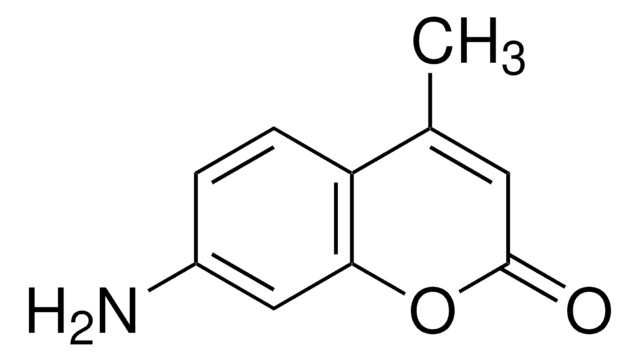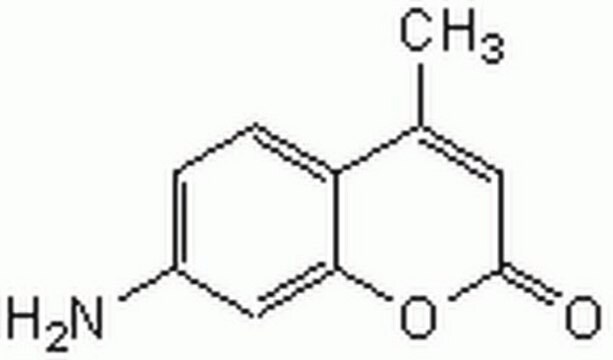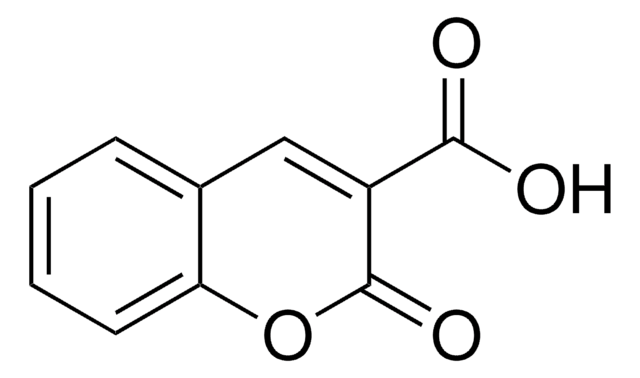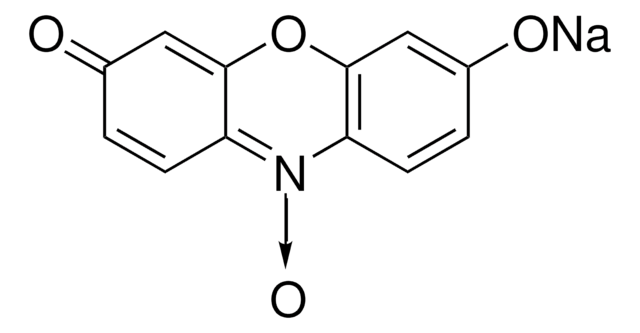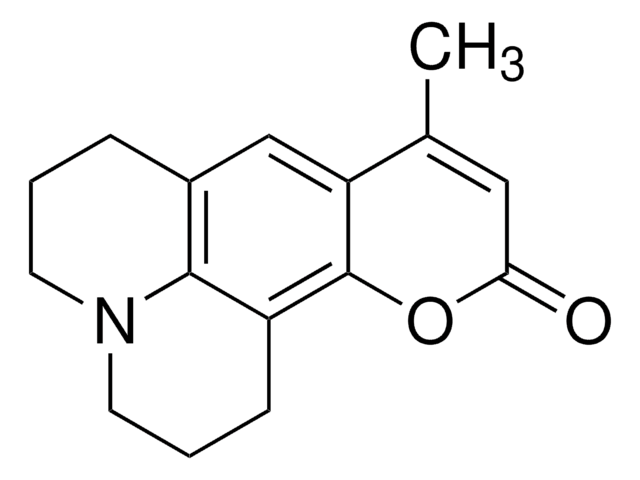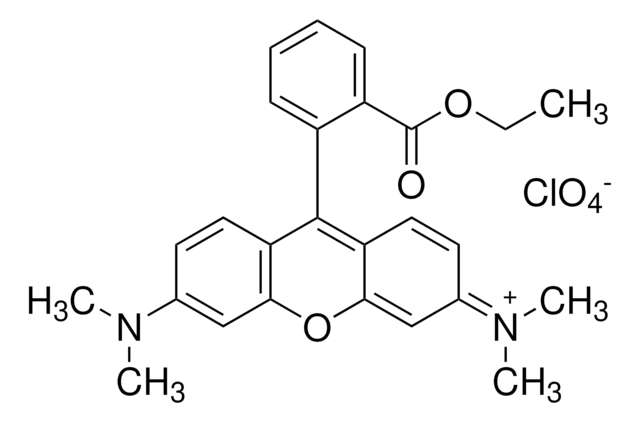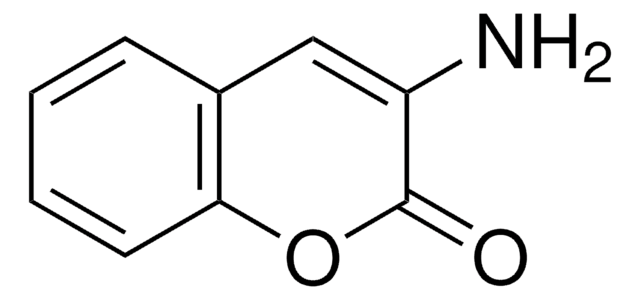28605
3-Cyanoumbelliferone
BioReagent, suitable for fluorescence, ≥98.0% (TLC)
Sinónimos:
3-Cyano-7-hydroxycoumarin
About This Item
Productos recomendados
Línea del producto
BioReagent
Ensayo
≥98.0% (TLC)
Formulario
powder
mp
≥250 °C (lit.)
solubilidad
DMF: soluble
alcohols: soluble
fluorescencia
λex 408 nm; λem 450 nm in methanol
idoneidad
suitable for fluorescence
cadena SMILES
Oc1ccc2C=C(C#N)C(=O)Oc2c1
InChI
1S/C10H5NO3/c11-5-7-3-6-1-2-8(12)4-9(6)14-10(7)13/h1-4,12H
Clave InChI
IJQYTHQDUDCJEQ-UHFFFAOYSA-N
Información sobre el gen
human ... MIF(4282)
Aplicación
Envase
Palabra de señalización
Warning
Frases de peligro
Clasificaciones de peligro
Acute Tox. 4 Dermal - Acute Tox. 4 Inhalation - Acute Tox. 4 Oral - Eye Irrit. 2 - Skin Irrit. 2 - STOT SE 3
Órganos de actuación
Respiratory system
Código de clase de almacenamiento
11 - Combustible Solids
Clase de riesgo para el agua (WGK)
WGK 3
Punto de inflamabilidad (°F)
Not applicable
Punto de inflamabilidad (°C)
Not applicable
Equipo de protección personal
dust mask type N95 (US), Eyeshields, Gloves
Elija entre una de las versiones más recientes:
¿Ya tiene este producto?
Encuentre la documentación para los productos que ha comprado recientemente en la Biblioteca de documentos.
Los clientes también vieron
Artículos
Nitric oxide (NO) as a signal transporter in neurons, endothelial cells and in the immune system.
Nuestro equipo de científicos tiene experiencia en todas las áreas de investigación: Ciencias de la vida, Ciencia de los materiales, Síntesis química, Cromatografía, Analítica y muchas otras.
Póngase en contacto con el Servicio técnico